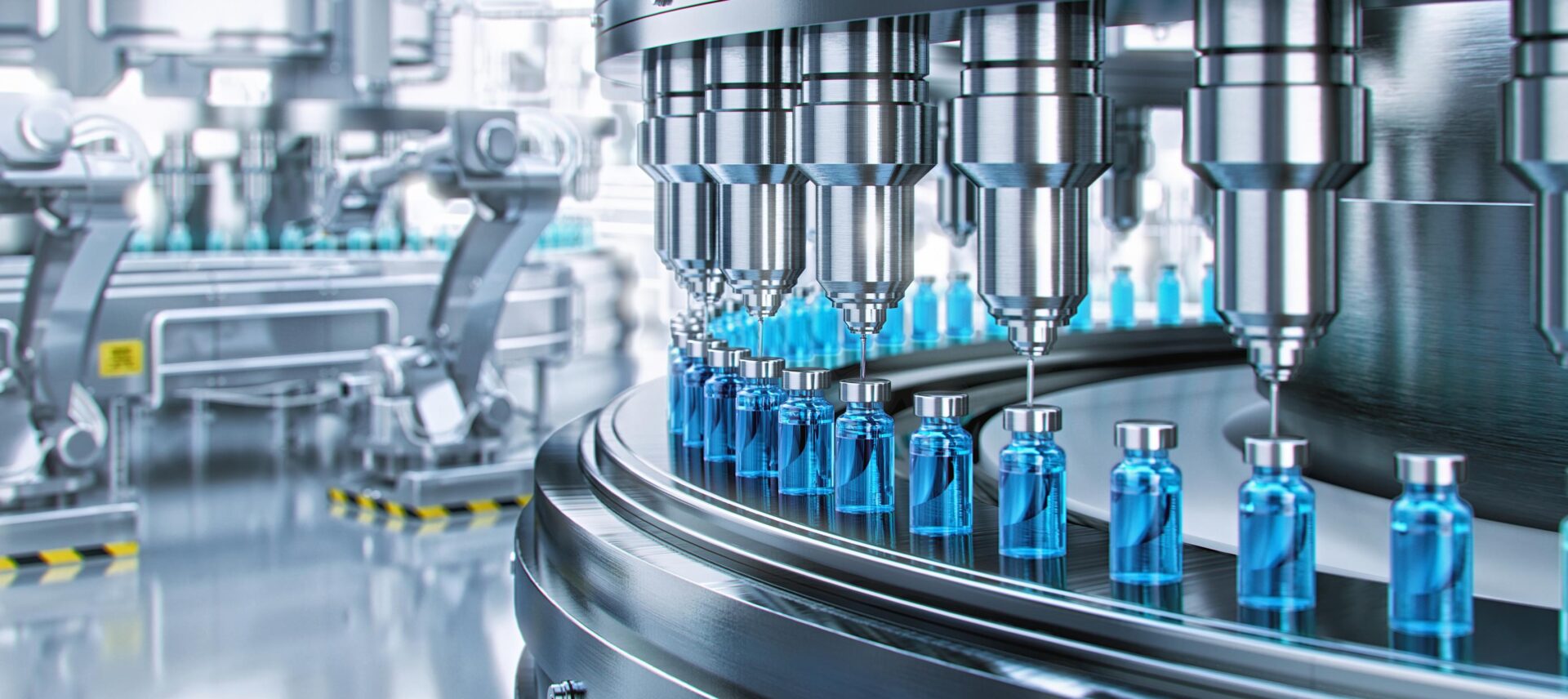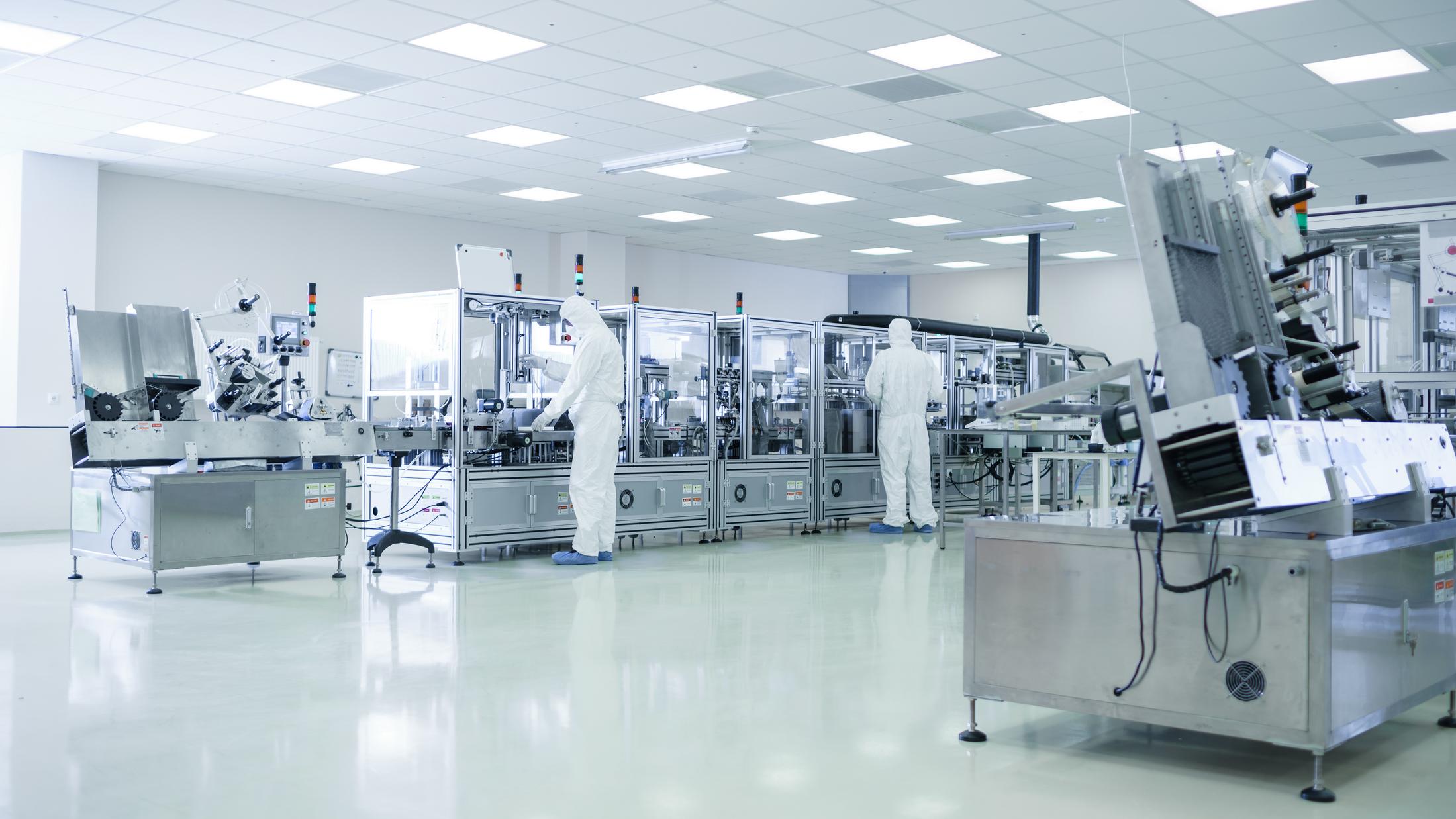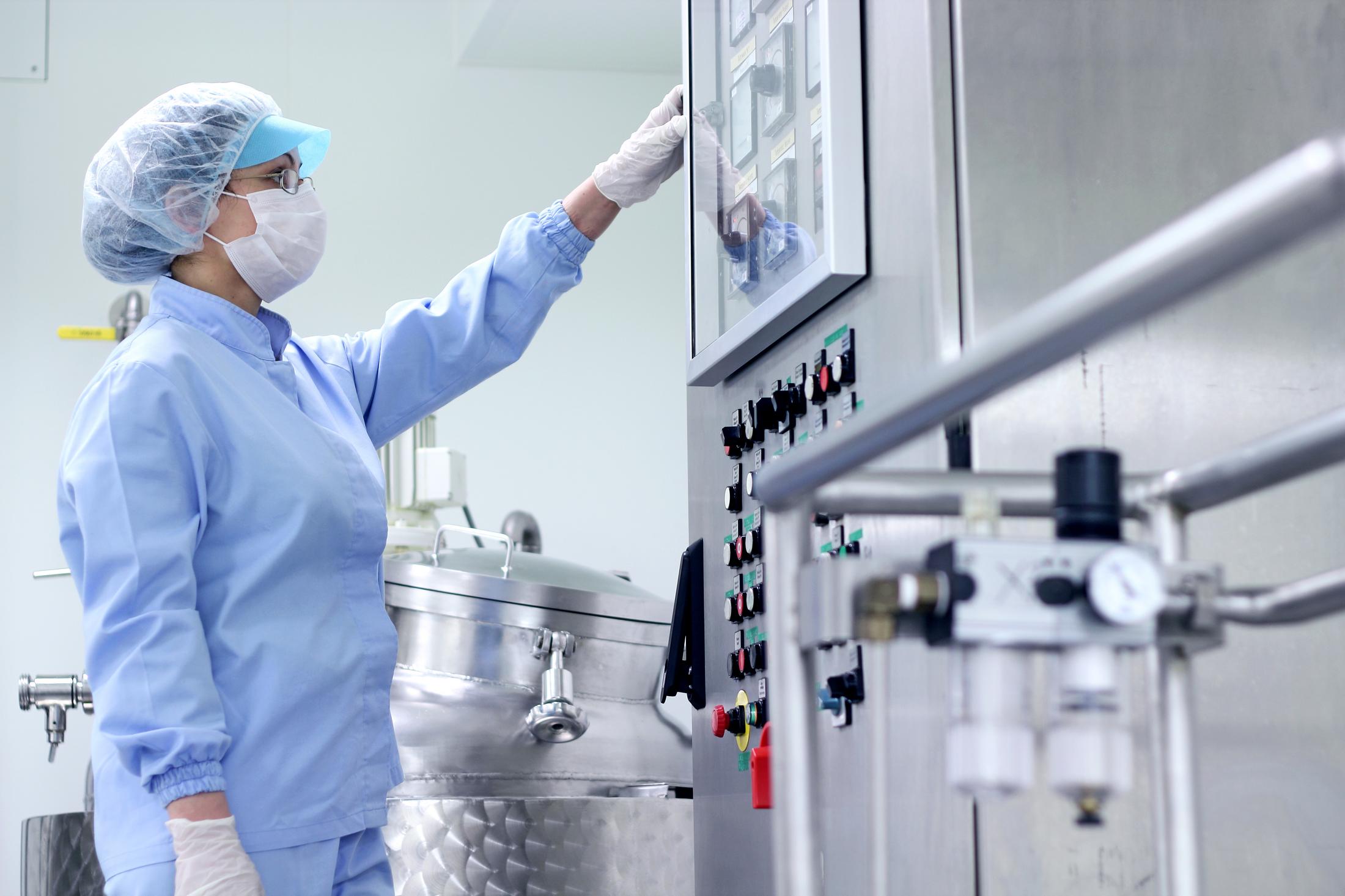News & Insights
Robotics and aseptic manufacturing in pharmaceuticals
Discover how robotics and automation are revolutionizing aseptic manufacturing processes, helping pharmaceutical manufacturers maintain high standards of safety and efficiency in an increasingly competitive market.

Robotics in aseptic pharmaceutical manufacturing is a growing field. They have the potential to enhance patient safety by reducing contamination risks, respond to regulatory compliance, improve operational efficiency, boost competitiveness through technological innovation, and support better waste management and sustainability practices.
This article dives into why robotics in aseptic manufacturing are on the rise and what pharmaceutical manufacturers need to know about this growing trend.

The key benefits of using robotics in aseptic manufacturing
Aseptic manufacturing products include antibiotics, biologics, vaccines, monoclonal antibodies, antibody drug conjugates, and chain molecules that are susceptible to heat.
The primary advantage of incorporating robotics into aseptic manufacturing is the significant reduction of human intervention, which is the greatest contamination risk to aseptic product safety. By minimizing human contact, robotics enhance sterility and consistency in production processes. In response to this need, regulatory guidelines are increasingly urging aseptic manufacturers to adopt innovative strategies that further minimize human involvement, raising standards of product safety and quality.
For example, the European Commission Annex 1 Guideline states in Section 8.9 states “Where possible, the use of equipment such as RABS, isolators, or other systems, should be considered in order to reduce the need for critical interventions into grade A and to minimize the risk of contamination. Robotics and automation of processes can also be considered to eliminate direct human critical interventions (e.g., dry heat tunnel, automated lyophilizer loading, sterilisation in place).”
Robots generate extremely low particulate levels and can operate in environments that are inhospitable to humans, making them ideal for aseptic pharmaceutical manufacturing. Modern robots are now compatible with sanitization using isopropyl alcohol and bio-decontamination with sporicidal agents and vapor phase hydrogen peroxide (VPHP). This adaptability ensures that robots can maintain sterility standards without compromising their functionality.
Additionally, robots offer the pharmaceutical industry significant operational advantages. They can be easily reprogrammed with minimal investment to accommodate changes in applications or container formats, such as vials, syringes, or cartridges. This flexibility helps reduce production downtime and labor force changes, while improving health and safety standards. Enhanced waste management, optimized space utilization, and augmented production flexibility further demonstrate the value robots bring to aseptic manufacturing processes.

Why are humans such a challenge for aseptic manufacturing?
Humans are surrounded by a unique microenvironment teeming with billions of microorganisms. These microorganisms are found on skin surfaces, in the intestinal tract, within the mouth, nose, and other body openings. Even with rigorous hygiene practices, it’s nearly impossible to eliminate all microbial presence, making human operators a continuous contamination risk in aseptic environments.
Barrier systems (such as RABS or isolators) are currently standard, but even with these, some manual tasks remain. When operators handle starting materials, primary packaging materials, and intermediate or bulk products, there is a significant risk of contamination through direct contact. Even with gloves and other protective measures, the potential for contamination remains high if protocols are not meticulously followed. Insufficient training or a lack of PPE can lead to improper aseptic techniques, increasing the likelihood of contamination.
To mitigate these challenges, pharmaceutical manufacturers currently invest in comprehensive training programs, enforce strict access controls, and ensure that all personnel adhere to rigorous gowning and PPE protocols. But the integration of robotics and automation takes these mitigation efforts a step further by significantly removing human contact from the equation in aseptic areas.
New regulatory guidelines prompt aseptic manufacturers to adopt robotics
In addition to the risk mitigation and operational benefits, regulatory guidelines are starting to heavily impact the deployment of robotics being utilized in aseptic manufacturing. Regulatory agencies expect aseptic manufacturers to rely on their own QRM (Quality Risk Management) program to guide any changes or improvements to their aseptic manufacturing processes.
But as Annex 1 clearly states “The manufacture of sterile products is subject to special requirements to minimize risks of microbial, particulate and pyrogen contamination. The following key areas should be considered: Facility, equipment and process design should be optimized, qualified, and validated according to the relevant sections of the Good Manufacturing Practices (GMP) guidelines. The use of appropriate technologies (e.g., Restricted Access Barriers Systems (RABS), isolators, robotic systems, rapid microbial testing, and monitoring systems) should be considered to increase the protection of the product from potential extraneous sources of particulate and microbial contamination such as personnel, materials, and the surrounding environment, and assist in the rapid detection of potential contaminants in the environment and product.”
Annex 1 goes on to reinforce this with “where possible, the use of equipment such as RABS, isolators, or other systems, should be considered in order to reduce the need for critical interventions into the Grade A zone and to minimize the risk of contamination. Robotics and automation of processes can also be considered to eliminate direct human critical interventions (e.g., dry heat tunnel, automated lyophilizer loading, sterilization in place).”
This means from a Good Manufacturing Practices standpoint; robotics being used in aseptic manufacturing processing play a key role in meeting the demands regulatory agencies are making with the push for increased technology adoption.
What pharmaceutical manufacturers need to know about implementing robotics in aseptic manufacturing
Start by defining success and failure metrics
Establish clear, measurable metrics for success and failure. These might include production speed improvements, improved environmental monitoring results, reduction in contamination incidents, or increased batch consistency. Defining these metrics helps evaluate the effectiveness of the robotic implementation and guides future optimization efforts.
Budget considerations
What are the upfront costs? This typically includes the robotic design package: robotic manipulators, necessary end effectors, programming software, sensors, safety devices, integration, and training.
Planning requires accounting for not only the initial investment in robots and associated equipment but also the ongoing costs for energy, maintenance, software support, and potential process modifications.
A well-thought-out budget should also consider long-term savings from reduced labor costs and increased operational efficiency. The real value in automation/robotics is the streamlining of manufacturing, improved quality control, increased manufacturing efficiencies, increased regulatory standing, and the reduced risk of contamination of product. Calculating the ROI by comparing the benefits against the costs will allow the project / procurement team to determine if the ROI is positive, or a justifiable investment.
Select appropriate robots
Understanding the specific requirements of your processes will guide the organization toward the best-fit robot/robotics type. Considerations will include payload capacity, reach, precision, and cleanroom compatibility. Models designed for aseptic environments, can be particularly suitable. The goal is to enhance process efficiency while improving sterility assurance. Implement proper safety protocols to protect both human workers and the aseptic environment’s integrity. Consider using an engineering firm for a turnkey project who is brand agnostic to get the most holistic solution for your context.
Get familiar with robot safety standards
Key standards include OSHA regulations and several ISO standards such as ISO 10218-1 and -2 for robotic safety. Additionally, ANSI/ISO 12100-2012 provides general safety requirements for machinery. The ANSI/RIA R15.06 standard outlines safety requirements for industrial robots and robot systems, while various RIA technical reports (TR R15.306, TR R15.406, TR R15.506, and TR R15.606) offer detailed guidance on specific aspects of robotic safety. Incorporating these standards into the design phase helps prevent accidents, ensures regulatory compliance, and promotes a safe working environment.
Conduct a risk assessment
A common misconception is that the robotic manufacturer handles all machine safety concerns, including risk assessment, but it is the pharmaceutical manufacturers responsibility since they determine when, where, and how to deploy and operate the equipment.
A risk assessment will allow the project / procurement team to identify any personnel, process, or product safety hazards the implementation of robotics could cause. Once the risk assessment has been completed and approved, organizations can establish controls and risk mitigation actions.
Document the application process
Documenting the process provides a visual road map that clearly defines specifications, expectations, and requirements. This can support traceability and simplify future audits or process improvements. This should include detailed records of installation, validation, how the software operates, and integration into existing systems.
Verify workflow
Before full implementation, verify the feasibility of new workflows and conduct cycle time analyses. Robot modeling and simulations can provide valuable insights into potential issues and optimization opportunities, helping identify and address bottlenecks before they impact production.
Establish employee training
Educating employees on safely working alongside robotic systems in an aseptic environment is a key component in meeting defined success criteria. Train staff on robot operation, maintenance, troubleshooting, and new workflows.
By carefully considering these aspects, pharmaceutical manufacturers can effectively integrate robotics into their aseptic manufacturing processes, leading to improved efficiency, reduced contamination risks, and enhanced product quality.
How Salas O’Brien can help
Salas O’Brien is a great first call when considering adding automation and robotics to your aseptic manufacturing facility. We can help you work through the issues in your context. Please reach out to one of our contributors below.
For media inquiries on this article, reach out to Stacy Lake, Director of Corporate Communications

Will Knapp
Will Knapp is an accomplished professional with over 20 years of experience in pharmaceutical manufacturing, quality, validation, and compliance. His expertise spans biopharmaceuticals, aseptic processing, oral solid dosage (OSD), and medical devices. Will’s technical knowledge extends to the intersection of digital transformation and sustainability, enabling pharmaceutical manufacturers to achieve meaningful and effective outcomes. He holds a Bachelor of Science in Management from Indiana Wesleyan University and currently serves as a Director of Pharmaceutical Projects at Salas O’Brien. Contact him at [email protected].

John Glenski, CPM
John Glenski is a leader in digital transformation in the industrial sector with a demonstrated history of providing data-driven outcomes for the world’s largest manufacturers. John works collaboratively with internal and external partners to deliver innovative solutions for smart manufacturing (automation, material handling, and data/information solutions) with a focus on sustainable applications. John serves as a Principal & Senior Director of Automation & Digital at Salas O’Brien. Contact him at [email protected].